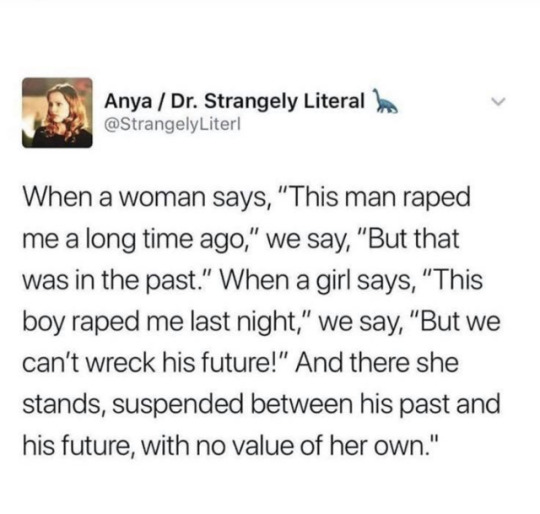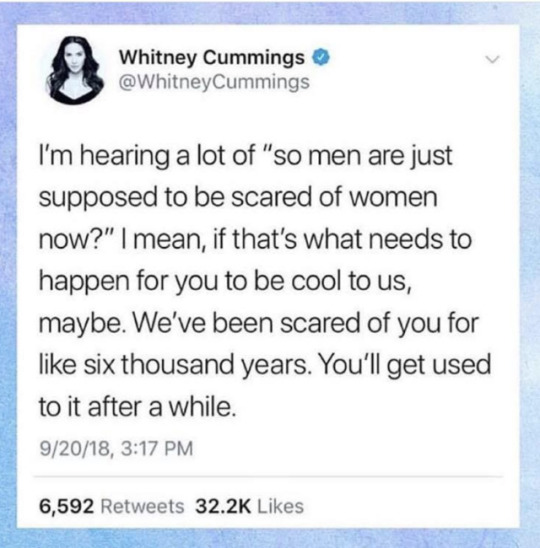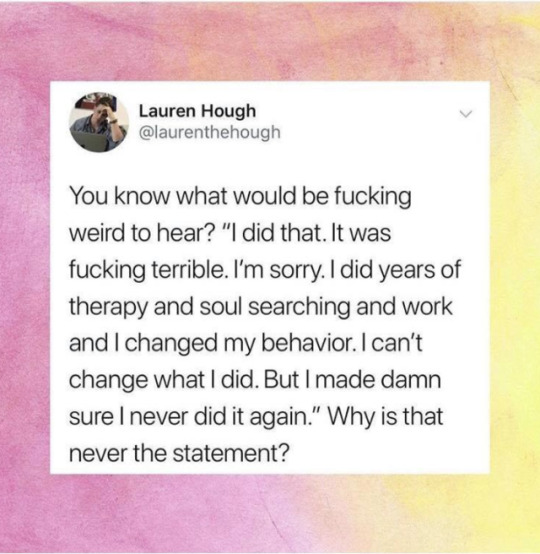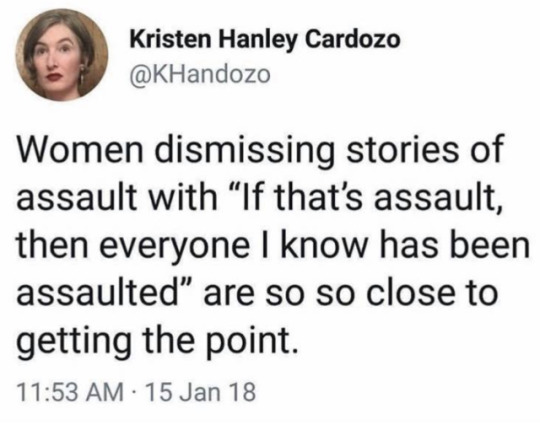Text
Life behind the Great (Fire)wall of China: Problems or potentials?
Between the year 770 B.C and 1633 A.D, dynasties in China built the Great Wall to protect their best interest – control, disguised as concern over the life of their subjects. Fast-forward to 1996 and present-day China, there is no longer an imminent threat to the citizens’ life, but the People’s Republic of China (PRC) government created yet another form of barricade, the Great Firewall, clearly illustrating their effort to protect their best and only interest all along – control.
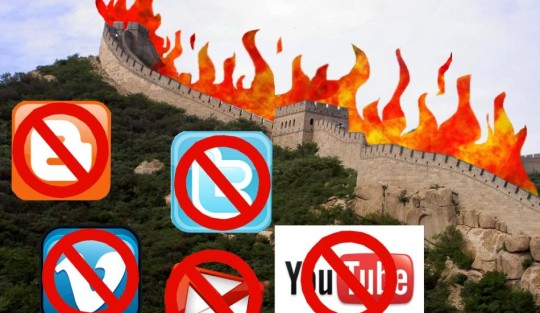
So, when you think about it, nothing much have changed for China in the last few centuries. People in positions of power are still evidently obsessed with the idea of total control and dominance through censorship and restrictions of website to keep out pernicious political ideas easily carried through US-based internet platforms.

Thus, majority of populations outside of China assumes that China’s internet (Chinanet), in the words of Michael Anti, “is like a dead-land, wasteland”. It is a generally-held idea by many that Chinanet is an extremely stripped-down version of the world wide web everyone else is enjoying which heavily stifles local creativity, innovation, expression and human rights progress.
However! This post is here to show the other side of the story, to provide another perspective on life behind the Great Firewall of China and how instead of being entirely problematic, it can also be a diamond in the rough – holding great economic potentials for the PRC and businesses alike.
So, how does one tap into this supposed potential?
It’s literally as simple as going on Twitter to create an account.
Well, that’s it. There’s your answer. All companies have to do is to literally go on social media platforms and use it to their advantage in penetrating the ginormous China market. But there’s no Twitter, Facebook or YouTube in China, you say?
While that is true, Chinanet has an extended line of home-grown social media platforms that not only function similarly to US-based social media platforms, but is the key to reaching the presumed-unreachable China market.
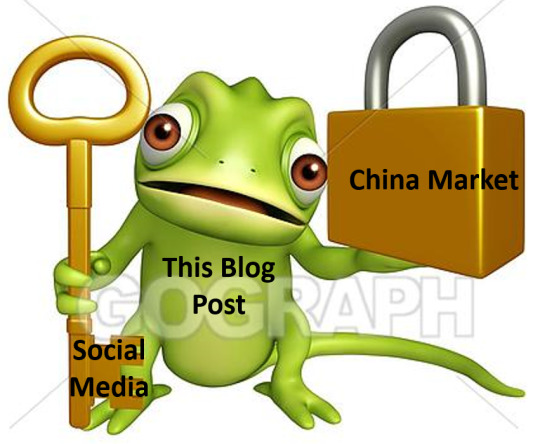
Before venturing into the Chinese market via the social media route, companies must firstly understand local internet users’ relationship with social media; how often do they use it, what do they use it for and why do they use it for this purpose?
How often do Chinese consumers use social media?
Considering how quickly the relevance of social media sites is rising where they are progressively overtaking internet portals as an entry point to retrieve content (Chiu, Lin & Silverman 2012) and as the most popularly used platform for information dissemination, it is safe to say that Chinese consumers will be spending much more time on social media platforms than on other sites. This is further solidified by a McKinsey survey in China where it is discovered that Chinese netizens spend 46 minutes a day visiting social media sites compared to Japan’s 7 minutes and America’s 37 minutes.
What do they use social media for and why?
In terms of individual needs and wants, Chinese netizens are quite similar to people from other parts of the world. They use social media for the same reasons Americans use Twitter and Malaysians use Facebook – to connect and form relationships with other users online (Crampton 2011) to fulfill their belongingness and love needs under Maslow’s hierarchy of needs.

The only significant difference is that the Chinese are much more active in their engagement on social media than any other users from other countries whereby the factors behind their high engagement on social media are linked to the familial separation from rural-to-urban migration and loneliness caused by China’s one-child generation (Crampton 2011).
Most importantly, consumers predominantly use social media to gain pre-purchase information and it is stated that social media’s influence on consumer purchasing decision in China is unparalleled (Chiu, Lin & Silverman 2012). This is because China’s expanding social media universe are generally flooded with online product reviews and groups of vocal consumer advocates who are not hesitant in speaking out on substandard products or services. Thus, Chinese consumers are more likely to purchase a product if it was seen or mentioned on social media sites by friends or acquaintances because they value and prize peer-to-peer recommendations, user reviews or other forms of word-of-mouth much higher than information provided through news sources and advertising due to their distrust of formal institutions and government-controlled media (Crampton 2011).

Akin to the diversity in China’s 1.39 billion population demographics, not all Chinese social media users are alike. According to Chiu, Lin & Silverman (2012), Chinese netizens can be divided into multiple segments, each with differing usage reasons and patterns. Social enthusiasts aka brand’s best friend, spend most of their time maintaining friendship networks and often use social media to share product reviews and about their recent purchases. They are also the most receptive of advertising and brand-sponsored applications. Resenders are brand-friendly people who are mostly likely to purchase products seen on social media. They use social media to promote themselves by actively re-posting messages from other sources and although they do not create and post original content, they typically possess larger followings. Opinionated users, on the other hand, are consumers who find advertisements distasteful and are not hesitant in expression their opinions if they are unsatisfied with a product or brand. If not managed well, they have a high tendency to become a brand’s worst enemy. Other segments that are less influential towards a brand are readers, QQ spillovers and inactives.

Additionally, companies should also recognize the differences between China’s home-grown social media platforms and those that are US-based, and their underlying implications. To illustrate, China’s YouTube equivalent – Youku and Tudou, instead of being used to stream short videos of cute animals or humorous domestic mishaps like on YouTube, they are filled with longer and mostly professionally produced videos mostly made up of pirated and subtitled foreign programs such as Prison Break and The Big Bang Theory (Crampton 2011). An interesting point here is that despite having never been aired on Chinese television, these series somehow gained huge fan bases in China (Crampton 2011). Thus, Youku and Tudou appear to resemble online television services like Netflix or Hulu more so than YouTube which is something reflected in the usage pattern of young Chinese netizens who more often watch these two streaming sites instead of the traditional television broadcasts. This implies that a company’s advertisement release must take heed of its communicative channel to prevent missing large groups of a consumer segment.
Another significant difference which should be noted is the communication length on social media when expressed in Chinese versus English. In the Chinese language, each character is a word on its own while a single word can only be made up by multiple characters in English. Hence, on microblogs like Twitter and China’s Sina Weibo where only 140 characters are permitted per posting, companies are able to advertise more easily and effectively on the platforms by using Chinese. As an example:

And so, the moral of the story is that within the problematic layers of the Great Firewall of China, lies potentials and opportunities for businesses to use to their advantage. Through understanding Chinese consumers and their social media usage landscape, companies can better penetrate the China market and manage their brand there via enhanced ways in engaging with the different types of social media users, conducting consumer research, launching and advertising their product, and even combating crises. Furthermore, with Chinese netizens becoming increasingly active in engaging in discussions related to companies, understanding and getting on social media is as vital as ever for businesses because a lack of understanding and engagement within this domain no longer translates to a lost opportunity as it did formerly, but rather a risk that businesses currently cannot afford to take.
That will be all from me, thank you all for a semester of intense brain exercise.

References
Anti, M 2011, 'Behind the great firewall of China', TedTalks <http://www.ted.com/talks/michael_anti_behind_the_great_firewall_of_china.html>.
Chiu, C, Lin, D and Silverman, A 2012, 'China's social-media boom', McKinsey and Company.
Crampton, T 2011 'Social media in China: The same, but different' China Business Review, Vol 38, Issue 1, pp 28-31, <http://www.thomascrampton.com/china/social-media-china-business-review/>.
3 notes
·
View notes
Text
Game creators, players & the community they created
In any given social situation, there is possibility of conflict. Think about your platonic circle of 4 to 6 friends, how often do arguments and fall-outs happen? Some may say never; others would say too often. Now, expand that social circle and imagine being friends with 300,000 other people – what are the chances of conflicts occurring then?
Welcome to the engaging virtual world of EVE Online, a science-fiction themed multiplayer game! With 300,000 active monthly subscribers on its back, let’s take a peak at what happens behind PC screens between this titanic sandbox of a gaming community and the people who gave them their sandbox: CCP Games.

Balancing the creator-player and player-player relationship has never been a walk in the park in the gaming world, but in EVE, this particular endeavor is made 50 times harder with its unique single-server gameplay, crazy number of players and from allowing all in-game narrative to be player-generated. Although this makes all happenings in EVE as organic as they come, giving players the free-rein to do whatever they please with occasional reminders of the existence of the end-user licence agreement (EULA) is basically leaving the door wide open for poop (unethical behavior) to hit the fan (to happen), but we’ll get to that soon.
Firstly, let’s talk about how CCP didn’t think things through when they decided to monetize their best-selling game. According to a documentary on EVE, subscriptions were drastically drive down during the month of player riot over the introduction of in-game microtransactions.

Players protested over the excessively high prices of the vanity items introduced and how the use of microtransactions would negatively disrupt the game balance as it enabled players to buy their way into advantageous positions in-game rather than through putting in effort and time (de Zwart & Humphreys 2014). To make matter worse, items that were bought with real world currency risk being destroyed in-game whereby upon destruction, their value would be transferred over to CCP (Suzor & Woodford 2013). Thus, these blatant show of CCP’s intention to wring extra profits out of invested players significantly stunted the growth of the organic gaming community within EVE as players began to brand CCP, previously perceived to be a community- and socially-focused gaming company advocating for creative visions, as a profit-centric organization with capitalism and greed sitting on its throne of priority.
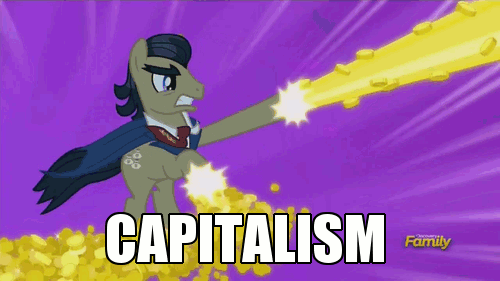
Another problematic aspect of the game present within the EVE community is botting – programs automating human input. These scripts are vexed by the community as it gives some players an unfair upper-hand when they automate actions, such as mining for resources, on which other players would have to spend significant time and effort on (Suzor & Woodford 2013). Moreover, the sudden flood of in-game currency from automated resource-mining would drive up prices of other in-game items and resources, heavily disrupting the in-game economy and negatively affecting the accessibility of the EVE environment to new players (Suzor & Woodford 2013), hence why anti-botting was made into a community norm, bringing us to our next point:
The relationship between creator-developed internal rules and player-generated community norms
Creators or regulators are the ones setting the rules governing how players interact with others in an online gaming community, but how effective are these formal rules when faced with strong community norms? Drawing an example of the inefficacy of rule implementation without considering the community norms of the people it would be affecting, the American government – in an attempt to eradicate online gambling – established a ban against it, but their effort went fruitless when the online community disregarded said rules and continued participating in what they felt as a norm to them.
American goverment:
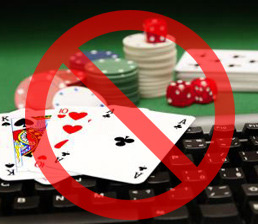
Americans:

Thus, it is suggested that the exercise of formal power is only legitimized when consent and actual acceptance are present within the community it affects, and while internal conflicts are typically solved based on consensual community norms in online social space communities like EVE, formal rules can actually be a more effective problem-solver when consent and the community’s reasonable expectations are considered (Suzor & Woofdord 2013). This is depicted in the case of botting where in the absence of regulator enforcement action, the generally-maintained anti-botting community norm is weakened and the community experienced a rapid rise in botting activity. If CCP had enforced action against said activity, this internal player conflict would’ve been solved years ago. However, the EVE community is loosely governed and relies more on self-restraint and self-policing by the community rather than formal restrictions by its creators which is why it was said earlier that EVE is:
basically leaving the door wide open for poop (unethical behavior) to hit the fan (to happen)

With the enormous population of an online community like EVE’s, the relationships of its members are bound to be unstable as players join the game with a tremendously diverse set of demographic profiles. What is deemed to be acceptable behavior could differ as each player hails from different cultural backgrounds, education levels and age groups – all of which play a hand in the derivation of their moral code and their expectation set of what is acceptable and not (de Zwart & Humphreys 2014). Therefore, the strict exercise of formal power by creators while keeping players’ consent and community norms closely considered is much needed to keep players in check within a gaming community. Although evaluating consent among a diverse community to formulate formal rules is difficult, democratic processes such as in the form of representative democracy could help provide more legitimacy to governance practices in order to create a better-governed and peaceful online gaming community (Suzor & Woodford 2013).
References
Nick Suzor and Darrel Woodford (2013) 'Evaluating consent and legitimacy amongst shifting community norms: An EVE Online case study' Journal of Virtual Worlds Research, Vol 6, No. 3.
Melissa de Zwart & Sal Humphreys (2014) The Lawless Frontier of Deep Space: Code as Law in EVE Online' Cultural Studies Review, Vol 20, no. 1.
1 note
·
View note
Text
Fandom & fan activism: Truly toxic or considerably constructive?
How many of us have firsthand or secondhand experience of the conversation below?
X: What music do you like?
Y: I’m a fan of One Direction’s stuff!
X: Oh, you’re one of them [scorns]
And by them, X probably meant:

We sort of understand what warranted X’s negative reaction when it was discovered that Y was part of the One Direction – or Directioner – fandom. But before we dive into why one would rather get maced in the face than to admit to being part of a fandom, and whether it’s really all that bad, let’s first begin by answering the most basic question: What is a fandom?
The term fandom is popularly used by the younger generation as means of identifying oneself with a social group that is a fan base of any entertainment content in the form of TV shows, films, novels, music, games or even celebrities. Thus, to be part of a fandom of something, one must first be a fan. But in today’s world populated with people who are quick to judge, fans have become marginalized and are used to being mocked by the media. To be a fan now, is to be shadowed by social stigma that paints you (if you’re a fan) as brainless and borderline crazy; something to be avoided like a plague.

However! Digital Communities MDA20009 and I are here to present fans and fandom to you in a new and more positive light; to show the other side of fan culture that usually goes unnoticed or blatantly ignored – the side of it that views these media consumers as proactive, critically engaged and creative instead of over-the-top, obsessive and people-who-have-too-much-time-on-their-hands.
To understand this, we must first look into the participatory culture present in fan-fictions, fandom web forums and when game companies give public access to their design tools to source for programmers (Jenkins 2006). Members of this culture is defined by Jenkins (2006) as someone who’s comfortable with artistic expressions and civic engagement; supportive of the creation and sharing of one’s creations with others; has experienced some kind of informal mentorship whereby knowledge from those most experienced are shared with novices; believe the significance in their contributions; and feel a degree of social connection with other members. It should also be noted that contributions do not have to be provided by every member, but they should believe that they are welcomed to contribute when ready and that their contributions will be valued and appreciated.
Based on this fundamental fandom concept, it would seem that the roots of fandom are pretty wholesome and inclusive.

Yet, people still view fandom as the black hole that created a participation culture practiced by problematic people who attract other problematic people into the picture. They forget that participation is an action that has existed long before computers or the internet was created, and that their creation merely enabled people to take this action across the physical plane onto the virtual plane to be developed into fandom’s current participatory culture. Moreover, instead of focusing so religiously on how fandom is stupefying the next generation, more attention should be directed at how its participatory culture are opening doors for the same generation to forge their creativity, develop certain skills and knowledge and boost their self-confidence – all of which would benefit these youngsters in the future as working adults.
And to those who have doubts about how fandom actually affords all these benefits, Henry Jenkins got you covered.

In his blog about the participatory culture, he highlighted that people part of a fandom are already in this self-enrichment process through affiliations in online communities, expressions from producing new creative content, collaborative problem-solving with others to complete tasks and develop new knowledge, and circulations which shape the flow of media (such as blogging).
Besides, who’s to say that fandom’s contribution to a fan’s growth as an individual stops there? Who’s to say that fans can’t achieve higher levels of self- and societal awareness and become activists themselves?
And thus on the 12th day of Christmas, God gave us fan activism.
Based on its definition by Jenkins, fan activism can be understood as a form of civic engagement and political participation emanated from fan culture and are basically fan-driven efforts to engage and address civic, social and political issues. Using superheroes or fictional elements from novels for activism is a classic example of fan activism whereby people looking to promote social change are utilizing the emotional and imaginative properties of popular culture to connect more intensely with their supporters (Jenkin & Shrestovva 2012).
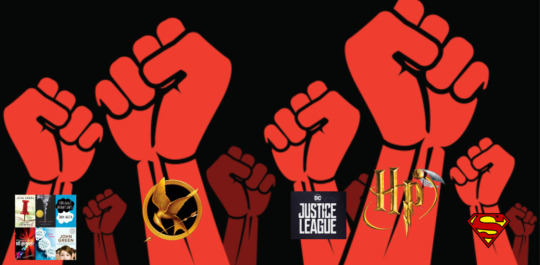
And because popular culture – especially blockbuster franchises – are known and favored by many, it can serve as a common reference point for both protesters and casual observers and be used as an effective community-bridging tool for organizing collective movements (Jenkin & Shrestovva 2012). Additionally, this would make activism work more appealing and approachable to the younger generation who are usually excluded from traditional, ‘adults-only’ campaigns especially since social media is heavily used for for this new kind of social campaign.
But fans don’t usually wake up one morning and think, “I’m going to fight sex trafficking today.” What links fans with actual social or political activism and motivates them to be part of an activist group is the subject matter of each fandom aka the singers, the actors, the celebrities.
Some examples of celebrity-inspired fan activism for social causes include Alyssa Milano’s constant encouragement of fans to embrace female power and to stand up against sexual harassment; how Mark Ruffalo has never stopped being vocal on issues like sexual harassment and fracking in hopes to inspire fans to fight for the same causes; and BTS’ collaboration with UNICEF for an anti-violence campaign to raise funds and awareness among fans towards creating a safer, violence-free world for children.

Although there have been murmurs of discontent from fans who resist the idea of mixing something as serious as activism into simple, care-free fan activities, it is hard to forgo the beneficial elements of fandom in paving a path to social activism and influencing fans to use it for analysis, networking, mobilization and communication related to campaigns for social causes, which is ultimately a big plus for societies in general.
Hence, my verdict on the topic:
Fandom and fan activism are constructive when it is viewed and understood from an objective, unbiased perspective. Moreover, I personally think that fandom comes very close to being the perfect instrument in facilitating fights for social causes because as mentioned in my previous blog about social media’s role in the activism world, individuals with fame written in their résumé aka celebrities tend to make good symbols of movements because of their widely established identity.
These famous faces – the subject of fandom – who are already admired, respected and idolized by many make good leaders in uniting people among a socially diverse constituency to come together for a cause. They can easily serve as the guitar pick used to struck the emotional chord of their fans, the face of movements that activists have spent most of their life fighting for, and the key to reaching millions and millions of people that can be made aware of the rising social issues that they otherwise would remain ignorant about....that is, if these celebrities are willing to stand in the limelight and establish themselves as a true blue activist, just like good ol’ Mark Ruffalo.
So, to all famed people out there: stay informed, stay aware, be a Mark Ruffalo (minus the anger issues).

References
Jenkins, H 2006, ‘Convergence culture: Where old and new media collide’, NYU Press.
Jenkins, H & Shrestova, S 2012, ‘Up, up and away! The potential of fan activism’, Transformative Works and Cultures, Vol 10.
Jenkins, H 2006, ‘Introduction: Confessions of an Aca-Fan’, Fans, Bloggers and Gamers: Exploring Participatory Culture, NYU Press, New York, pp. 1-6.
3 notes
·
View notes
Text
The power of social media: Crowdsourcing & crowdfunding in the face of calamities
Scientists have slapped an expiration date on the face of earth and it reads: 10 years. If humans don’t buck up and get their ducks in a row to tackle global warming in the next 10 years, what will befall on the climate is going to be irreversible and all life on earth will soon be doomed. Between war, climate change, ethnic cleansing and old men marrying 12 year-olds, was it really that surprising to hear that we have an apocalypse heading our way?
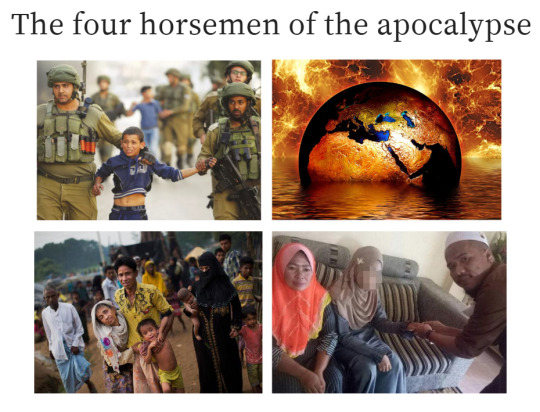
Earth is already suffering from the cascade of catastrophe linked to climate change. Every time we go online, it’s like a game of Minesweeper; for every scroll we make on our Twitter feed, we wonder if the next tweet we read will be about the earthquakes in New Zealand or the tsunamis in Japan. We wonder if the victims are alright. We wonder if tweeting #MH370 makes a difference.
It does.

Little do we know, social media platforms like Instagram and Twitter play a hand in crowdsourcing – described as the process of retrieving ideas, skills or funding from large groups of people in an online setting, and crowdfunding – often referred to as “online fundraising”; both increasingly critical in the face of emergencies.
How does crowdsourcing in social media help in the midst of a crisis?
Essentially, this has a lot to do with the openness of the social media’s system, which in Twitter’s case, allows anyone with an account – be it journalists, government authorities or regular individuals – to contribute (in the form of reporting) or understand (in the form of information processing) the events occurring (Crawfod 2009). This allows the experience of those in crisis to be directly heard by news agencies and authorities, then rapidly circulated to a bigger audience while individuals interested in following such events are able to access the information sought for with ease through the establishment of specific hashtags related to the topic of interest (Bruns et. al 2012).
To further explore social media’s affordances in emergencies, we should take a look at what goes on under a hashtag created at the height of a crisis. The pictures below show the hashtag relating to the recent Lion Air crash being used and the conversations initiated by different Twitter accounts stemming from the original tweet incorporating the #JT610 hashtag:

This depicts that hashtags can be used as a mechanism for conversation by users to discuss on the crisis, in which some insightful theories could arise from, while others may utilize these hashtags to keep themselves updated on the current situation of the crisis, regardless whether the reader owns an account on the platform or not (Bruns et. al 2012). Moreover, the rapid dissemination of information to a wide audience is enabled through hashtags as seen in the case of #qldfloods in 2011 whereby Queensland Police Service was able to reach its immediate audience and have its message broadcasted and amplified with the assistance of Twitter users in spreading said message (Bruns et. al 2012). Thus, crowdsourcing on social media, especially in the form of hashtags can be of great help in information sharing and spreading during times of disasters.
And what of crowdfunding?
While crowdsourcing on Twitter is something generally partaken by news agencies or government authorities through their Twitter accounts during times of crisis, crowdfunding elements on the other hand, are more likely to show up in tweets by regular users – although the actual crowdfunding transaction does not occur on the social media platform itself but rather on websites such as:

In the case of the 2011 South East Queensland Floods, it was stated that tweets containing circumstantial information and advice on the crisis, links to news articles and advice on ways to provide assistance and donation were present in the tweets of individuals unrelated to any news outlet or the authority whereas @QPSmedia, the official account of the Queensland Police Service, was not as active in the provision of information on crisis assistance and fundraising efforts (Bruns et. al 2012). It was also noted that efforts to organize volunteers and fundraising activities were more evident in the #qldfloods discussion than in the @QPSMedia conversation (Bruns et. al 2012). Hence, social media platforms like Twitter prove to be beneficial during a crisis in the sense that it increases the effectiveness and efficiency of crowdfunding efforts by acting as a medium that majority of the public have access to, making information on donation and even volunteering activities such as links to GoFundMe pages or relief efforts much easier to be found.
Issues on crowdsourcing and crowdfunding online
In spite of how well-received and beneficial the two activities are, there are still issues pertaining to crowdsourcing and crowdfunding online worth discussing over. The primary issue faced by crowdsourcing online is how problematic it can get when the information gathered and used is based on rumors or falsehood (Ford 2012), leading to inaccurate news or what we know today as “fake news”.

Thus, necessitating the verification process before the release or redistribution of information. However, in oppressed countries like Kenya where Ushahidi, a crowdsourcing platform created to give marginalized people a voice to speak up to authorities governing them, was created, the act of enforcing their own verification process within the platform to decide which reports are “verified” makes the creators feel as if they are no different than the same media and authority were oppressing them (Ford 2012). Furthermore, crowdsourcing in times of crisis would be ineffective in regions where the communities have not acclimatized to the usage of online tools during emergencies (Posetti & Lo 2012).
Be it as it may, most credibility issues during emergencies can be tackled if news agencies or government authorities allocate higher efforts into finding new ways to verify information through trustworthy sources on the ground. @QPSMedia’s ‘#Mythbuster’ tweets should also prompt other authorities and media outlets to develop innovative methods online to combat the spreading of misinformation during emergencies. Additionally, to ensure that crowdsourcing is practiced effectively and efficiently in all regions, each country’s authority should increase awareness on the uses of such online tools in emergencies and how both contributors and audiences from the public can employ them for their own benefits.
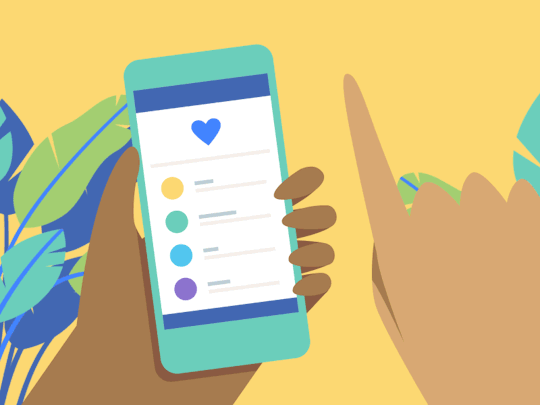
As for crowdfunding online, some have cited their worries on fraud risks when donating to a third-party unrelated to the authorities in effort to help in crisis periods, but crowdfunding during emergencies are not as subjected to scrutiny as when the focus is shifted into the media industry context because the criticisms received on media crowdfunding are comparatively stronger and more voluminous. Critics have argued that crowdfunding here is an exploitative tool used by media conglomerates against fans and supporters to rob genuine, independent producers of access to funding opportunities and that ‘fanancing’ (financing by fans) requires more consideration by media scholars as it is fundamentally fan exploitation.
BUT that’s a story for another day. Thanks for reading!
References
Bennett, L, Chin, B & Jones, B 2015, ‘Crowdfunding: A new media & society special issue’, New Media & Society, vol.12, issue 2.
Bruns, A, Burgess, J, Crawford, K & Shaw, F 2012, ‘Executive summary: #qldfloods and @QPSMedia: Crisis communication on Twitter in the 2011 South East Queensland Floods’, pp. 7-10.
Crawford, K 2009, ‘Following you: disciplines of listening in social media’, Continuum: Journal of Media and Cultural Studies, 23(4), pp. 525-535.
Posetti, J & Lo, P 2012, 'The Twitterisation of ABCs emergency & disaster communication'.
#weeklyblogs#week8#socialmedia#crowdsourcing#crowdfunding#disastercommunication#crisiscommunication#mda20009
1 note
·
View note
Text
undefined
youtube
Holy fuck I almost peed myself
2 notes
·
View notes
Text
Haters gonna hate, trolls gonna troll: Where does social media stand in online wars?
(Warning: Long read ahead)
In layman’s terms, trolling means intentionally creating verbal fights online – or online wars if you will – by making controversial or offensive comments to provoke emotions of readers, pushing them to engage in these fights for a troll’s personal amusement or gain while haters usually just participate in online hate speeches. However, the two do have one thing in common: they make life online one hell of a ride.
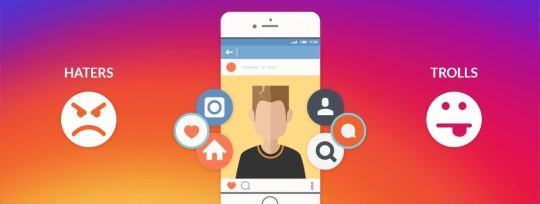
Although trolling is seen as the lighter, less harmful version of online hate speeches, they are at times taken seriously by authorities, such as in the case of Sean Duffy, a 25 year-old who was imprisoned for 18 weeks in the U.K for commenting and mocking the death of two teenagers on a tribute page on Facebook – which brings us to the work of Whitney Phillips centering around trolls targeting online memorial sites.
Phillips suggested that despite popular belief that these type of trolls are heartless beings bombarding mourners with offensive insults, there is another side to the story. She stated that these trolling practices are predominantly targeted at “grief tourists”; people who aren’t actually related to whoever is being mourned over and are simply joining in on the “fun” (technically grief) of mourning over the deceased, thus proposing that trolling “grief tourists” is a righteous action taken against those clouding tribute or memorial sites with insincere grief (Sherpherd et. al 2015).

Even so, trolling often causes more harm than good. They not only are pawns used to shift the people’s attention away from rising social issues like sexism, racism, homophobia and others, they are also huge contributors to the normalization of online hate and harassment by legitimizing hate speech – which is related to an individual’s esteem need to exist, to be (Sherpherd et. al 2015). Those who assume the identity of a hater are people who struggle to exist online and have resorted to lowly means like hate-advocating on social media in their journey to achieve online relevance and significance.
And this is where social media comes in and joins the party because as of today, we can’t have one without the other; where social media goes, online hate speech follows.

But why is social media so closely related to hate?
Well, this has a lot to do with social media sites’ open-to-all infrastructure and the liberal ideal of freedom of expression. Unregulated online spaces are the unguarded soil that let the idea of freedom of speech grow and blossom into what we know today as hate speech (Sherpherd et. al 2015). As the limits of hate speech have always been ill-defined on social media platforms, to participate in hate speech and to get away with it scot-free is like a walk in the park – maybe even easier – which gave rise to the widespread participation in online hate speech.

However, it is unfair to say that social media created hate speech because this would imply that people have never intentionally offended or insulted others before social media came along, which we know is untrue. Hate has always been around. It was here in the form of racism against African-Americans in the 1950s, it was here in the form of transphobia when Masha P. Johnson was found dead in the Hudson River in 1992 and it was definitely still here 4 years ago in the form of hashtag-turned-hate-campaign #GamerGate. If anything, the actions of people online are a mere reflection of their actions offline. Take #GamerGate for example:
Although it was originally stated to be a plight for gaming ethics, further understanding showed that it is actually a backlash and hate campaign against the increasing presence and participation of women in the gaming industry which is perceived to be a change from pre-(s)existing cultural norms (Sherpherd et. al 2015). In simpler words, men felt that women were threatening their male power and privilege in games. Feeling offended, they organized a campaign to show the rest of the world that men are the “true” gamers – depicting how sexist and misogynistic the gaming culture AND the people part of that community are, who are probably as sexist as they are online and offline.

And is anyone doing anything about all this hate?
Frankly....no, not really. There have been efforts (as there always are) from social media management companies: The Black Lives Matter Facebook group – a target of malicious, hate-fueled comments – has reached an agreement with Facebook to shield certain pages, meaning flagged hate speech will reach the chain of command more quickly; Twitter representatives have responded to online abuse against women by promising to collaborate with the Women, Action and the Media organization while its own CEO also personally apologized for the company’s prior inadequate action regarding women abuse online (Shepherd et. al 2015).
But, how effective are these actions against the persistent spreading of hate online? Especially when these companies practice the very deeply embedded victim-blaming culture and understand that to them, hate online is more of a profitable development than a problem; which is why alternative interventions are much needed.
However, social media platforms responsible for hosting these abuse are not the ones advocating and developing plans to mitigate online hate. Unfortunately, this burden falls yet again on the shoulders of the victims and the marginalized because policies created and implemented by the non-diverse workforce in tech industries – made up mostly by people not part of the marginalized groups – will not do much nor will they do nearly enough in protecting people against online abuse, hence why the marginalized are forced to take matters into their own hands in fighting against online hate and abuse.

In the face of online wars of hate and trolling, social media’s affordances are the key used to open doors to the facilitation of hate speech and organization of hate-driven collective movements against the oppressed and marginalized groups both in online and offline societies. Thus, to properly combat this issue, I believe that a mix of corporate technological policy, legislative solutions and an understanding of the underlying online and offline culture is needed to develop a long-term fix for a longstanding problem.
References
Sherpherd, T, Harvey, A, Jordan, T, Srauy, A & Miltner, K 2015, ‘Histories of hating’, Social Media + Society, 1(2), pp. 1 - 10, 4.
1 note
·
View note
Text
Social Media: For or against activists?
We’re in the 21st century. A few decades ago when our grandparents talked about the future, they probably thought – flying cars, time-travelling machines and cyborg assassins. Though we aren’t far off from cyborgs (cue Sophia the robot) and flying cars (Tesla), time-machines unfortunately could still be a few centuries away. But one thing’s for certain, no one 50 years back would look to the future and think: Social Media.
If they had, could the cause of activist Martin Luther King Jr. reached highs beyond his time? If our present form of social media had existed during the 1950s American civil rights movement when this great man put his life on the line for the equality and human rights of African-Americans, would it have made a bigger difference?
Let’s find out.

What does social media actually do for activism and protest? Yes, it could be used as means of representation – a tool used by people for ‘citizen journalism’, and for organizing collective action in mobilizing people into getting on the streets for protests (Gerbaudo 2012), but does its act of “fixing dates” and “creating groups” really make a difference in mobilizing and organizing a movement? Well yes, because social media’s role goes beyond that. It is true that protests are successful thanks to the years spent by networks of activists working together to build a firm, solid foundation for this groundswell. Without the help of social media, these individuals managed to unite around a grievance and found symbolic matters to organize under where these symbols that serve as protests and movements’ catalyst typically take the form of a human, charged with emotion and story-driven elements (Sigal & Biddle 2015).
But what happens when social media is added into the picture?
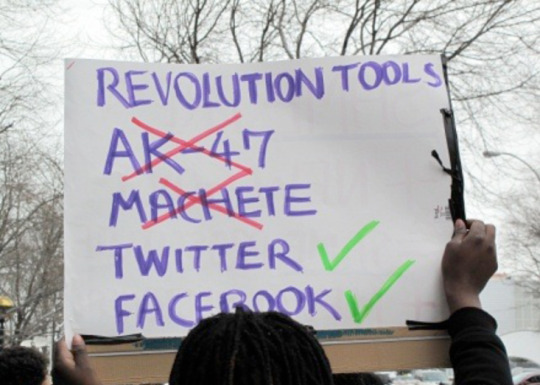
With the help of SNS like Twitter or Facebook to facilitate interpersonal connections across distance, the speed to find individuals and to learn from one another to develop common causes will definitely be increased. Not only does social networking sites empower people and enable them to gain greater access to information, they also provide more opportunities for everyone to engage in public speech in hopes to influence others into joining their cause. With this greater power to reach a wider audience, the ability to undertake collective action for a movement is therefore enhanced! Take our Bersih movement for an example. If it was not for the effects of social media buzz, the size of its rallies would not have grown from 30,000 in 2007 to 200,000 in 2015.
Moreover, social media is where the construction of “choreography of assembly” – the emotional scene-setting and process guiding the physical assembling of a highly dispersed and individualized constituency (Gerbaudo 2012) – occurs. It is because of “liquid/soft leaderships” like the faces of social media movements: Alice Garza (#BlackLivesMatter), Alyssa Milano (#MeToo) and other influential social media activists that scene-setting of movements is able to happen more effectively for more members of the public to be inspired and encouraged into joining a cause. These individuals become the symbols of movements who are responsible in constructing common identifications among a socially diverse constituency and triggering emotional impulses among the public.

Additionally, the people’s emotional chord can be further struck through streaming or viewing graphic media contents of incidents kick-starting protests and movements on social media platforms, which would help activists recruit new followers to join their cause. This shows that sensitive content shared on social media along with the rest of social media’s affordances can be used to build and bring up a movement.
However, this does not mean that social media is Mr. Perfect for activism and protest.

Like everything created by humans and even humans themselves, social media’s affordances are not without flaws. Protest slogans like #AllLivesMatter, #BlueLivesMatter and #HimToo are proof of social media backfiring on activists. Due to social media’s “open-to-all” attribute, this makes it easier for backlash in the form of protest slogans to occur, just like how #AllLivesMatter and #BlueLivesMatter were created by Caucasians to cast African-Americans as aggressors all because they felt excluded, discriminated against and was basically not used to something happening that did not revolve around them or around catering their needs.
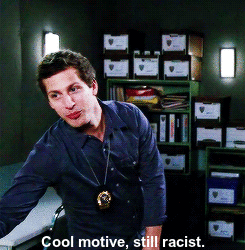
This shows that although a group of individuals misinterpreted a movement, it was ultimately social media that allowed these misinterpretations to reach the public and gave the public a platform to counter originally genuine movements based on misguided understanding.
Furthermore, in regards to sensitive content shared on social media, most platforms use community policing mechanisms where users report others who violate a platform’s regulations to ensure that only generally-accepted content are shared online (Youmans & York 2012). This can actually work against activists as offended communities can abuse this function by reporting and removing contents they dislike or disagree with to censor views they oppose, which obstructs activists’ path to acquire more followers via sensitive contents shared. Also, automated social media protocols for discouraging “spammers” would also at times, disable or ban accounts with high volume of correspondence – working against activists by thwarting their attempt to reach more audiences.
In worse cases where there is authoritarian social media use at play such as the Syrian Electronic Army, a hacker group aimed to deface, eliminate an target sites that host anti-regime content, the state’s power over social media will eventually be seen in the form of content restrictions to repress movements (Youmans & York 2012).

Despite its pitfalls in the face of activism and protest, I strongly believe that social media can be the tool to champion activists’ cause. With the right people doing the right things, the affordances of social media can be used to take the success of protests and movements to greater heights more so than its detrimental qualities can impair movements. Some of the right things that can be done for a movement to achieve positive change include appealing to the majority of the population, using celebrities or influential individuals as the spokesperson or the face of a movement and acquiring political backing or support which I think is the most crucial action a movement can take to ensure success.
“We can either win wars or win election”.
An article explained that the only way for current generations to make real change is either through going to war or overthrowing governments authorities that do more harm than good. It was written that contemporary protest is broken because people’s will is no longer the basis of the authorities making up the government. Many things can be attributed to this with the topmost possible cause, in my opinion, being human greed. The greed of elected representatives has blinded them from doing right by their people and has made them put their own needed before the needs of others. Thus, as the people, we must exercise our rights by voting in the right individuals into position of power. And as activists, they must begin networking and liaising with politicians to gain the support of individuals in position of power.
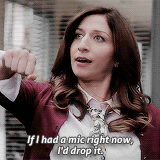
References
Gerbaudo, P 2012, ‘Tweets and the streets’, Pluto Press: London.
Sigal, I, & Biddle, E 2015, 'Our enduring confusion about the power of digital tools in protest', Fibreculture Journal, Issue. 26, pp. 1449-1443.
Lafi Youmans, W. & York, J. (2012) ‘Social Media and Activists Toolkit’, Journal of Communication, pp 315-329.
5 notes
·
View notes
Text
How Obama proved social media to be worth a politician’s while
“Obama Was Too Good at Social Media” – an article’s title from The Atlantic reinforced a fact known by myself and many others; that America’s beloved 44th president’s landslide campaign success owe it all to the big SM (social media). Barack Obama saw online potential, harnessed it and has since been dubbed the “first social-media president”. But before we get to the juicy part of how his campaign proved that social media can reap benefits for politicians, let’s first venture into the science behind getting young people (the Obama campaign’s target audience) to engage in the political landscape.

It all starts with the cognitive engagement theory which basically says that the more educated you are, the better informed you will be which could lead you to a future of active participation in politics to show how satisfied you are with government policies (Abdulrauf, Hamid & Ishak 2017). The people’s political knowledge and participation in politics both play essential roles in the democratic process and they are interrelated in the sense that a drop in participation can be attributed to the declination in political knowledge. Thus, political knowledge is key to getting youths to participate in politics...and social media is key to providing youths with that political knowledge because when have young people ever refused the sweet temptations of social media?
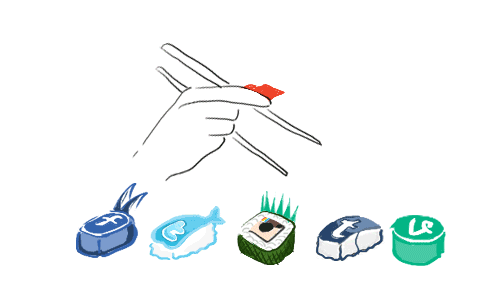
As youths are believed to be naturally apathetic to politics, the informational use of social media can help increase their political knowledge and participation because the platform provides new, easier ways to engage in political behaviors (Abdulrauf, Hamid & Ishak 2017). Instead of mentally crossing oceans and mountains to create political content, youths can opt for “easy” political engagement like liking or commenting on content created by someone else.

And it is this easy behavior that becomes a gateway behavior to more active participation in politics as they can create political habits, sustain political behavior and even lead to harder political behavior over time (Bode 2017). Furthermore, youths who are now politically active but were previously not credited their change in behavior to unintentional exposure to politics on social media (Valeriani & Vaccari 2015). Pairing up social media’s low cost of access to information and its enablement of easy political behaviors, social media can undoubtedly be used to raise political knowledge and interest among youths that may translate into future participation in politics.
Now that we understand how politics can get to young people via social media, let’s move on to the less-abstract topic of the day:
What did Obama do with social media to win the presidential elections?
And what can politicians learn and benefit from it?

Firstly, he used Twitter marketing to gauge voter opinion, establish and popularize his brand centering around a “cool” persona by tweeting amusing comments along with serious messages. Secondly, his campaign team used YouTube and video marketing to explain his campaign platforms, stances on issues along with some lighthearted content that helped establish Obama as a more relatable figure in contrast to other candidates. The public was also encouraged to create videos in support of his candidacy – an excellent showcase of how user-generated content can help spark more buzz and support from the public. Thirdly, his team used LinkedIn to network with business owners and entrepreneurs of various industries while developing articles tackling important issues, attracting 2.7 million followers to his account and demonstrating how generating great content can establish a politician’s status as a thought leader. Lastly, his team used Facebook for campaigning purposes and had created different accounts to reach out to specific voter groups to better communicate with voters.
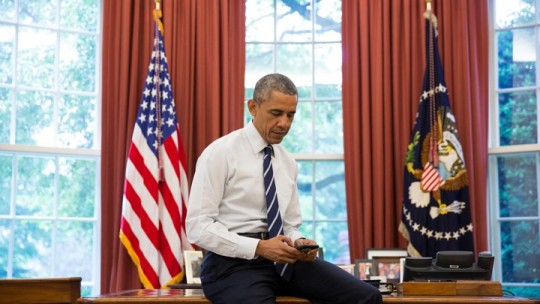
Looking back at Obama’s campaign, politicians can absolutely use social media to their advantage if they are able to establish and build a distinct and relatable social media persona, ensure that their campaign team is able to relate this personal over different platforms and that the politicians themselves remain authentic and actively engage with supporters on social media to avoid being perceived and generalized as a typical politician.
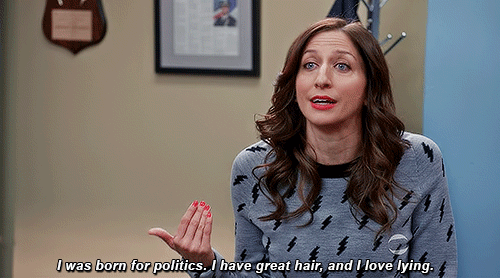
The Obama campaign also highlights that social media can be used by politicians to circumvent traditional and conventional methods of reaching out to voters, advertise themselves for free, tailor messages to specific audiences based on analytics and gauge voter opinions and feedback. Additionally, politicians may also utilize social media for fund-raising purposes as 2008 American presidential candidate Ron Paul have done, make viral and realize supporter-organized campaigns.
Despite all these benefits, politicians should nevertheless tread carefully on these waters because social media does have its pitfalls; especially when politicians address their online audiences without prior consultations with their PR team, raising avoidable controversies. Politicians should also avoid using underhanded social media tactics as seen on the recent Cambridge Analytica fiasco, increase their awareness of bots – fake social media profiles used to spread conflict and news from uncredible sources, and refrain from participating in low-tier discourse – a deterioration of communication whereby memes and unprofessional posts are used by politicians to communicate with the public on social media.
Thanks for coming to my TED Talk.

References
Abdulrauf, A A, binti Abdul Hamid, N. & bin Ishak, M.S. 2017, ‘Cognitive Engagement and Online Political Participation on Social Media among Youths in Malaysia: The Moderating role of Political Knowledge’, SHS Web of Conferences, vol. 33, pp. 85.
Bode, L 2017, ‘Gateway Political Behaviors: The Frequency and Consequences of Low-Cost Political Engagement on Social Media’, Social Media + Society.
4 notes
·
View notes
Text
The power of social media & politics
If you’re following us on our Facebook page? You’ll know that we’re following three politicians (Barack Obama, David Cameron & Julia Gillard) from three different countries that have been elected (chosen) for us to watch, study and learn as they try to harness the socialsphere of political communication to gain society’s vote.
Why? Politics is a necessary practice that offers each nation the fundamental infrastructure of democracy. Without politicians, doesn’t matter how corrupt, which most of them are, the very fabric of a social/economic freedom becomes lost.
However, politics is going through an era of vast change thanks to the ubiquitous building blocks of social media. In particular, the Middle East has epitomised the unifying power of social media among a country’s citizens. But why didn’t their politicians try to reach out to them through these sparse channels if they were so effective? They didn’t see this as a tool to voice their argument to the people - they relied on the trusted tools of war to bring “peace” to the nation.
So, where does this leave us in terms of discovering what our three influential politicians are doing as elected representatives of this experiment? Very easy… everything!
These three market economies (America, England and Australia) are fighting another war, but on a different playing field – one that they can’t control. Instead of society being collateral damage - this war allows society the means to mount an attack and wield their weapons of change.
Edward Bulwer-Lytton’s coined metonymic adage seems to offer a fitting conclusion: “The pen is mightier than the sword.”
3 notes
·
View notes
Text
A Political Media Podcast
Following the election, my friend Dan Rezler and I sat down to discuss the political media surrounding the 2012 election. We analysed meme culture and also how social media can be good or bad for a political climate.
http://www.danrezler.com/podcast/2012/11/12/me-time-podcast-ep2-kassie-king.html
5 notes
·
View notes
Text
Is Tumblr a blog or social network site?
When asked about blogs, millennials would say Blogger, Wix or Wordpress; Generation z may go on forever about Tumblr and its latest memes. We get it, today’s generation knows a lot about blogs. So, what are they? Geert Lovink (2011) considers blogs as the epitome of “productive contradiction between public and private” as they exist as “public journals”. Blogging 101 would have you know that blogs at their outset, involved individuals logging journals onto their personal “web logs” which coined the term “blog” (Duermyer 2018). Blogs could be explained as a personalized self-expression; an accessible technological extension for the personal home page; asynchronous; mainly public; have entries that are time-stamped and appear in reverse chronological order (Week 4, slide 8) and are predominantly used for ‘citizen journalism’ as they:
Generally focus on specific subject matters,
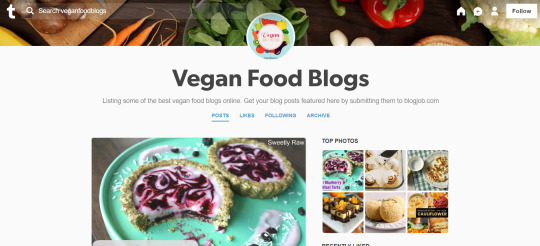
has an area for readers to comment or respond to posts,
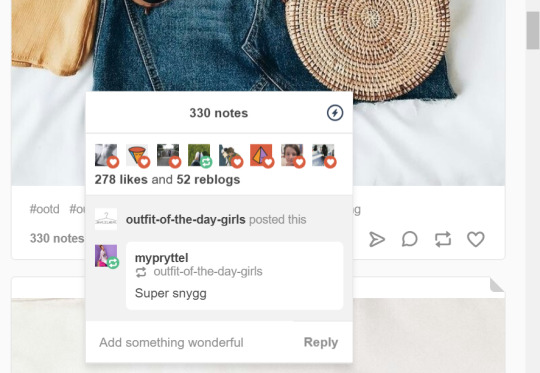
an archive of previous blog posts,
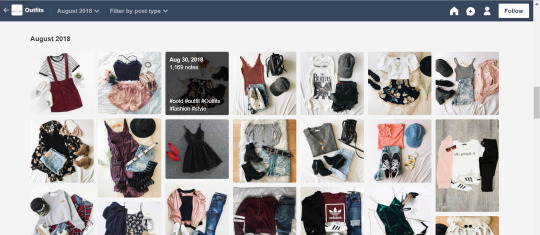
allows visitor subscription and can be managed by software where many features are automatically created (Saddington 2010).
In another light, social network sites (SNS) are comprehended as web-based services allowing individuals to create a public or semi-public profile within a bounded system; articulate a list of other users who they share a connection with; and view and cross their list of connections and those made by others within the system (boyd & Ellison 2007). Majority of SNS participants primarily seek to communicate with people they have pre-existing social ties with rather than to network or befriend strangers (boyd & Ellison 2007). If one were to ask a teenager – the SNS-addicts of our generation – on what to expect when joining an SNS, they would tell you to start by setting up a public or private profile and working on your home feed,

From there, you acquire friends or followers,
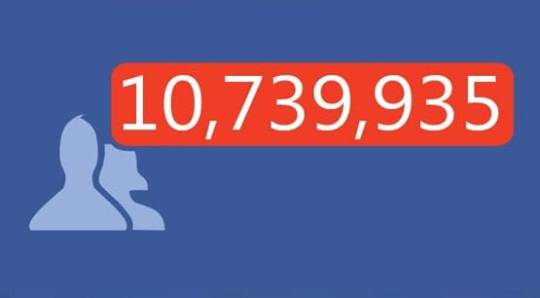
receive likes and comments from other users,

and participate in groups and tags (Nations 2018).

But what exactly differs blogs from SNS?
Their central but sometimes interrelated differences are that blogging generates content to be kept on the blog itself while SNS enables users’ engagement about content (Gussif 2014). SNS traffic also typically comes from user-to-user interaction while blog’s traffic mainly occurs from searches done by potential first-time readers (Collier 2016). Additionally, while SNS posts tend to be shallow in media richness, short in length and are less descriptive, blogs are generally flexible with word count and media content format though it is still not the best medium to host 10-paged articles (Scheidies 2013).

And so, we arrive at the climax of the discourse – is Tumblr a blog or SNS?
I say both. Maybe a little more blog than SNS, but ultimately both.
Tumblr, as I understand it, is a hub for pictures of someone’s daily lives; amusing memes and gifs; art in the forms of drawings and writings; and porn. All of which, I believe, are personalized self-expressions. At Tumblr-signups, we set up a profile (both blogs and SNS require the creation a public or semi-public profile) then gain access to our dashboard (an accessible technological extension for the personal home page), customize our blog theme (similar to working on our home feed on SNS) and explore Tumblr to find blogs to follow (Moreau 2018).

Once familiarized with the Tumblr mechanics, we start liking or re-blogging followed blogs’ asynchronous content that are time-stamped and appear in reverse chronological order (both blogs and SNS are asynchronous and have posts that are time-stamped and appear in that order), maybe even start posting our own blog content to receive likes, re-blogs, comments (an SNS activity), to gain “mutuals” or followers (similar to SNS’ articulation of a list of users to share a connection with; acquiring friends or followers), and interact with other users (blogs have ribbons for users to send messages, comment or respond to entries which have also been adopted by recent SNS). And like SNS, Tumblr incorporates tags/hashtags.
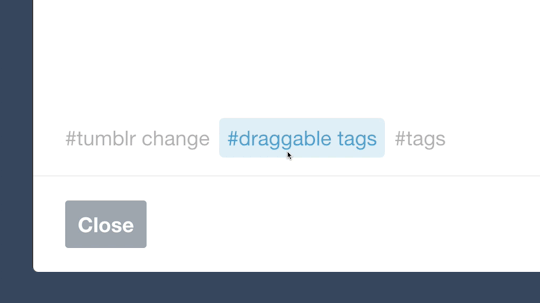
Moreover, microblogging – a combination of blogging and instant messaging enabling users to generate short messages to be posted and shared with publics popularized by Twitter, a SNS (Nations 2018), have been adopted by Tumblr users, further blurring the lines between blog and SNS. Thus, it is safe to say that Tumblr of 2018 is part blog, part SNS.

Be that as it may, Tumblr’s blogging origins remain indisputable as it fundamentally focuses on specific subject matters, has a properly organized archive of previous blog posts and can be managed by software that automatically creates blog features. It also emphasizes on content generation rather than the enablement of user engagements about content, has the most traffic from searches than user-to-user interaction and are flexible with entry length and content format.

References
boyd, dm & Ellison, NB 2007, ‘Social network sites: definition, history and scholarship’, Journal of Computer-Mediated Communication, vol. 13, issue. 1.
Collier, M 2016, ‘The key difference between your blog and other social media channels that most companies miss’, MarkCollier.com, viewed 27 September 2018, <http://www.mackcollier.com/difference-your-blog-social-media-company/>.
Duermyer, R 2018, ‘What is blogging and why is it popular’?’, The Balance, viewed 27 September 2018, <https://www.thebalancesmb.com/blogging-what-is-it-1794405>.
Gussif, A 2014, ‘Blogging vs. social media: here’s the difference’, Gussif Marketing Group, viewed 27 September 2018, <http://www.gusiff.com/marketing-posts/blogging-vs-social-media-heres-difference/>.
Lovink, G 2011, ‘Networks without a cause: a critique of social media’, viewed 27 September 2018, <https://www.researchgate.net/publication/254810120_Networks_Without_a_Cause_A_Critique_of_Social_Media>.
Moreau, E 2018, ‘How to use Tumblr for blogging and social networking’, Lifewire, viewed 28 September 2018, <https://www.lifewire.com/how-to-use-tumblr-4049305>.
Nations, D 2018, ‘What is microblogging?’, Lifewire, viewed 28 September 2018, <https://www.lifewire.com/what-is-microblogging-3486200>.
Nations, D 2018, ‘What is social networking?’, Lifewire, viewed 27 September 2018, <https://www.lifewire.com/what-is-social-networking-3486513>.
Saddington, J 2010, ‘What is a blog? What is a blogger? What is blogging?’, viewed 27 September 2018, <https://john.do/blog-blogger-blogging/>.
Scheidies, N 2013, ‘The 20 biggest benefits of blogging’, Income Diary, viewed 27 September 2018, <https://www.incomediary.com/biggest-blogging-benefits>.
‘Week 4: blogging practices’ n.d, Swinburne University of Technology Sarawak, Digital Communities.
#topicoftheweek#tumblr#blog#socialnetworksite#socialnetwork#blogorsocialnetwork#sns#week4#weeklyblogs#mda20009
3 notes
·
View notes
